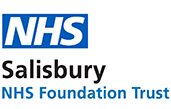

Internal Reference Number: FOI_6987
Date Request Received: 25/01/2023 00:00:00
Date Request Replied To: 22/02/2023 00:00:00
This response was sent via: By Email
Request Summary: Skin Cancer Pathway Management
Request Category: Students (Educational)
| Question Number 1: What are your current skin cancer patient clinical pathway guidelines e.g., from initial patient symptoms in a GP setting to specialist referral as well as treatment and follow-up procedures and protocol. Attached are two outdated CCG (Clinical Commissioning Group) pathway guidelines for reference. | |
| Answer To Question 1: Please see attached the Current Salisbury Skin Service Follow Up Protocol; Current SCC Guidance; and Current Skin 2ww Process. Please note the SCC part of the document Salisbury Skin Service Follow up Protocol has been superseded by the SCC Guidance. To accompany this answer to question 1 please also see the documents listed below: | |
| Question Number 2: Does your skin cancer pathway include remote patient-clinic interactions (as opposed to face-to-face interactions), Yes or No and if yes, elaborate what they are and what stage in the pathway they’re used e.g., teledermatology (the use of digital photography to assess patient lesions) at the GP stage. | |
| Answer To Question 2: The overwhelming majority of consultations pre and post diagnosis are face to face. Telephone consultations are used where patients are reluctant, or find it difficult, to attend in person. These are a small minority. Telephone consultation was used more during Covid restrictions but does not allow for clinical examination of the skin visually or with dermoscopy. For this reason face to face consultation is required. Virtual or video link appointments are used rarely and not by all consultants. The booking clerk states that they have booked less than 10 in the past year. Direct referral accounted for the vast majority of referrals. Teledermatology with digital photography is used by GPs for advice prior to referral. Dermatoscopic images, although very useful for more detailed analysis, are rarely used by GPs. Images are accompanied by a clinical history which helps determine the most suitable route of referral when the GP is less certain of a skin cancer. | |
| Question Number 3: What were your latest skin cancer pathway guidelines in 2019/2020 prior to the COVID-19 pandemic (announced as a pandemic by WHO on 11 March 2020). | |
| Answer To Question 3: Please find attached the 2019 Salisbury Skin Service Follow Up Protocol and the 2019 Care Pathway for Skin Cancer Patients which has been extracted from the Trust's 2019 Skin Operational Policy. Please note that the pathway mapping process (attached to Q1 as the Current Skin 2ww Process) was only undertaken last year and had not previously been documented like this, hence there not being a pre-Covid-19 version. To accompany this answer to question 3 please also see the documents listed below: | |
| Please see Attachments: | |
| To return to the list of all the FOI requests please click here | |
Our staff at Salisbury District Hospital have long been well regarded for the quality of care and treatment they provide for our patients and for their innovation, commitment and professionalism. This has been recognised in a wide range of achievements and it is reflected in our award of NHS Foundation Trust status. This is afforded to hospitals that provide the highest standards of care.
